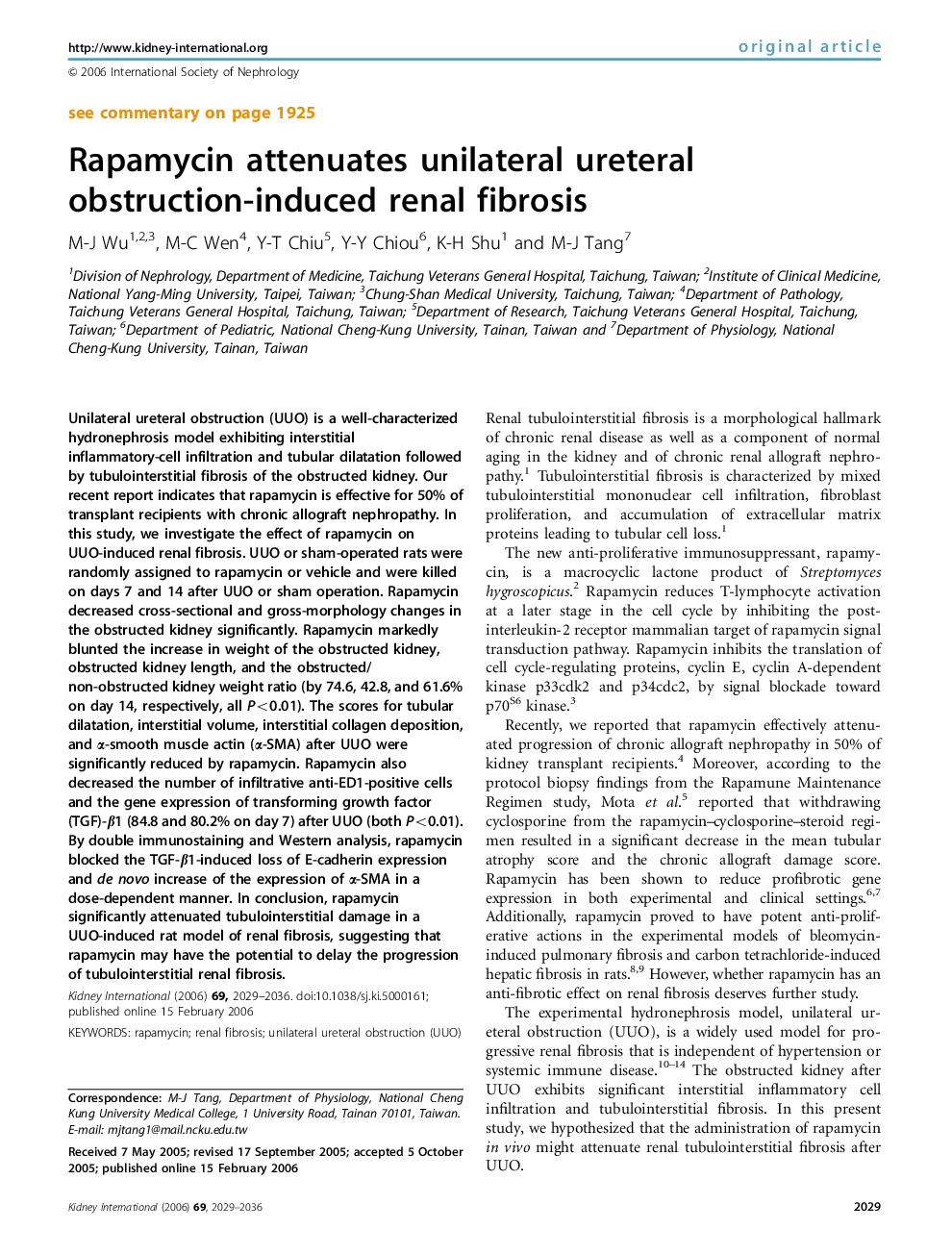| Article ID | Journal | Published Year | Pages | File Type |
|---|---|---|---|---|
| 3890076 | Kidney International | 2006 | 8 Pages |
Unilateral ureteral obstruction (UUO) is a well-characterized hydronephrosis model exhibiting interstitial inflammatory-cell infiltration and tubular dilatation followed by tubulointerstitial fibrosis of the obstructed kidney. Our recent report indicates that rapamycin is effective for 50% of transplant recipients with chronic allograft nephropathy. In this study, we investigate the effect of rapamycin on UUO-induced renal fibrosis. UUO or sham-operated rats were randomly assigned to rapamycin or vehicle and were killed on days 7 and 14 after UUO or sham operation. Rapamycin decreased cross-sectional and gross-morphology changes in the obstructed kidney significantly. Rapamycin markedly blunted the increase in weight of the obstructed kidney, obstructed kidney length, and the obstructed/non-obstructed kidney weight ratio (by 74.6, 42.8, and 61.6% on day 14, respectively, all P<0.01). The scores for tubular dilatation, interstitial volume, interstitial collagen deposition, and α-smooth muscle actin (α-SMA) after UUO were significantly reduced by rapamycin. Rapamycin also decreased the number of infiltrative anti-ED1-positive cells and the gene expression of transforming growth factor (TGF)-β1 (84.8 and 80.2% on day 7) after UUO (both P<0.01). By double immunostaining and Western analysis, rapamycin blocked the TGF-β1-induced loss of E-cadherin expression and de novo increase of the expression of α-SMA in a dose-dependent manner. In conclusion, rapamycin significantly attenuated tubulointerstitial damage in a UUO-induced rat model of renal fibrosis, suggesting that rapamycin may have the potential to delay the progression of tubulointerstitial renal fibrosis.
